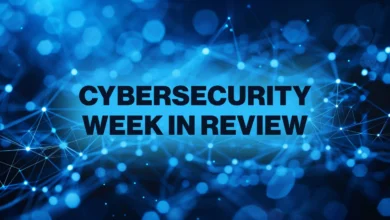CISA Unveils New CVE Program Roadmap for Enhanced Cybersecurity

▼ Summary
– CISA has confirmed its support for the CVE program and outlined future priorities in its “Quality Era” strategic document.
– The agency advocates for the CVE program to remain publicly maintained and vendor-neutral, while exploring diversified funding sources.
– CISA emphasizes the need for broader multi-sector engagement, transparent processes, and better representation on the advisory board.
– Modernization efforts include improving automation, data quality, transparency, and community feedback mechanisms for the CVE program.
– The program is transitioning from a “Growth Era” focused on expanding CNAs to a “Quality Era” prioritizing better data and responsiveness.
The US Cybersecurity and Infrastructure Security Agency (CISA) has released a strategic roadmap reinforcing its commitment to the Common Vulnerabilities and Exposures (CVE) program, marking a significant shift toward what it terms the “Quality Era.” This document, published on September 10, outlines future priorities while affirming the program’s public, vendor-neutral nature, warning that privatization would undermine its value as a shared resource.
CISA acknowledges the necessity for stronger leadership and increased investment in the CVE framework. The agency is actively exploring diversified funding mechanisms in response to community feedback, though it did not reference MITRE, the current program administrator, prompting speculation about a potential change in secretariat responsibilities. Vulnerability researcher Patrick Garrity noted this omission, suggesting it may indicate CISA’s intention to assume a more direct operational role.
A central theme in the roadmap is the push for broader multi-sector engagement. CISA emphasizes the importance of transparent processes and accountability, calling for holistic representation on the CVE Program advisory board. The agency plans to leverage partnerships to include international organizations, governments, academia, tool providers, data consumers, researchers, and open-source communities. Initiatives like the Vulnrichment program, launched in May 2024, serve as a model for enriching vulnerability data, especially as the National Vulnerability Database (NVD) faces ongoing resource challenges.
Recent structural changes include the establishment of new working groups, the CVE Consumer Working Group and the CVE Researcher Working Group, in July 2025. These groups aim to foster wider participation and improve program responsiveness. Garrity, representing VulnCheck, highlighted collaborative efforts with industry leaders like Cisco Talos and GitHub to support these initiatives through broader CVE Numbering Authority (CNA) engagement.
Modernization remains a key focus. CISA’s ambitions include accelerating automation, enhancing CNA services, expanding API support, and improving the CVE.org platform. The agency also aims to raise data quality standards, implement federated enrichment mechanisms, and boost transparency, particularly for CNAs of Last Resort and Authorized Data Publishers. Regular communication of milestones and active global dialogue are prioritized to incorporate community feedback into the evolving roadmap.
This strategic shift formalizes a transition from the CVE program’s “Growth Era,” characterized by expanding the global CNA network to over 460 organizations, to a “Quality Era” focused on trust, responsiveness, and data integrity. The terminology isn’t new; CISA officials like Lindsey Cerkovnik and Christopher Butera have previously emphasized the need for this evolution, noting that past efforts centered on scale must now yield to higher standards and automation to meet global cybersecurity demands.
Industry experts have welcomed the document as a positive step toward much-needed reform. Garrity described it as a starting point that acknowledges longstanding opportunities for improvement, signaling a renewed commitment to strengthening the foundation of global vulnerability management.
(Source: InfoSecurity Magazine)





